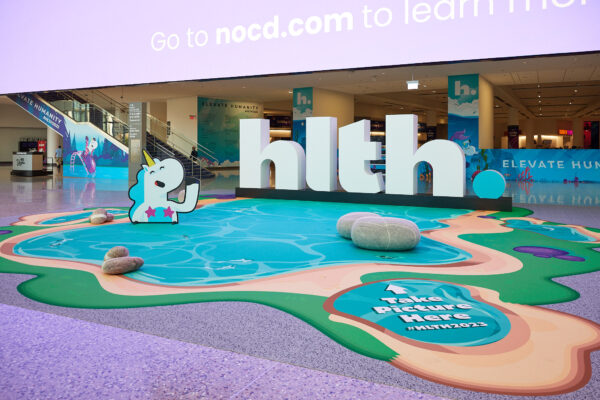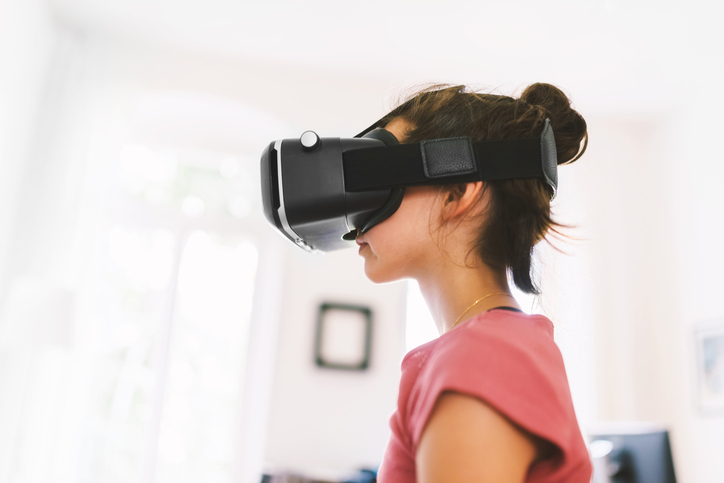
At the HLTH 2023 event, several companies showcased health tech to support seniors. The National Institute on Aging (NIA), the U.S. federal research agency on aging and Alzheimer’s disease, partnered with HLTH and the Science Center in Philadelphia to offer a boot camp Startup Challenge accelerator participants ahead of the event.
Although the NIA Startup Challenge and accelerator is in its second year, this year was the first time NIA worked with the Science Center to run a boot camp for the program. Todd Haim, director of the Office of Strategic Extramural Programs with NIA, said the purpose of the boot camp was to bring commercial readiness and the training to first time healthcare entrepreneurs. Of the 215 applications submitted, 20 were accepted.
Positioning the boot camp ahead of HLTH gave participants a chance to test their newly acquired skills when pitching their technology to healthcare stakeholders. Traditionally, scientists and clinicians sometimes have trouble communicating their extensive knowledge in a way that is accessible to people from different backgrounds. Another goal is to demystify the government grant application process, particularly for Small Business Innovation Research (SBIR) grants. The majority of companies in the boot camp and at the NIH Pavilion are digital health companies but several focused on medtech, according to Haim.
“We have a company that’s developing a rehab mobility device that doesn’t need power doesn’t need batteries, so it’s so much lighter and can actually be accessed in rural areas and in the home,” Haim said. “We have companies that are really revolutionizing the caregiver space. Others are developing devices that can improve medication dosing. We have several companies in really revolutionary technologies around heart disease. There are so many different approaches, all focused on older adults.”
Haim said the Challenge is designed to help underrepresented innovators, who may not have the networks to identify investors. The boot camp is intended to help scientists refine their elevator pitch, consider how they talk about their businesses and media training, among other priorities.
For Heath Naquin, VP of government and capital engagement at the Science Center, the collaboration with NIA and HLTH connects them with startups who may be interested in opening offices in Philadelphia. It also reflects the organization’s interest in helping companies secure SBIR grants.
“One of the things that we are working on is SBIR funding education and support in the Pennsylvania region,” Naquin said. “We’re actually going to be kicking off a series of trainings and active support programs.”
AgingSense, a medtech startup led by Pam Cacchione, a professor of Geropsychiatric Nursing at University of Pennsylvania College of Nursing, developed socks that can assess heart failure exacerbations and response to treatment through a stretch sensor. The socks would be provided by physicians. The tech is poised for human testing through a small pilot. Cacchione also plans to secure STTR grant funding to help advance the tech through FDA 510(k) clearance.
Caregiver app CareMobi, currently in beta, is designed to centralize, track, and share information about the day-to-day care of a loved one between the caregiver and family members so they can stay up to date on their health status. Developed by Tina Sadarangani, a geriatric nurse practitioner and an assistant professor at NYU, the app condenses data into summaries that can be easily shared with physicians.
Voice-It, led by Marcia Shade, an assistant professor with University of Nebraska Medical Center College of Nursing, developed a pain chat app to conduct real-time pain assessments for older adults in their natural environment. The app uses an AI chatbot to will guide user through and an evidence-based pain assessment that goes beyond the typical 1-10 pain scale. The assessment will be more bio psychosocial. It will also query how the user’s pain impacts their social and day-to-day functions.
To view the full list of Startup Challenge finalists, click here.
Other companies highlighted tech for the aging population as well. Although Hinge Health has focused on tech to support physical therapy home exercise programs, this year it added a fall prevention program for adults aged 65 and older. Its goal is to improve balance and strength through a targeted digital program.
The program provides access to a care team of physical therapists, board-certified health coaches, and physicians trained to serve seniors. For seniors less comfortable with digital tech and for those with limited mobility, it offers a House Call component to members who live in eligible locations to provide extra support.
Gait assessment enlisting AI and “biolelectric medicine” are at heart of Machine Medicine. Founded and led by former neurologist Dr Jonathan O’Keefe, the goal of its platform, called Kelvin, is to develop an objective way to analyze changes in gait over time by combining neurology with engineering by analyzing video of the patient’s movement and produce a graph using the Unified Parkinson’s disease rating scale. In addition to helping physicians track the progression of Parkinson’s disease, Kelvin could also be used to support clinical trials for Parkinson’s disease as well as other progressive movement disorders.
Canadian startup ElderPRIME led by Rob Parker developed an app to help seniors continue to live independently by improving medical record keeping and care coordination, reducing diagnostic errors, and lowering the burden on caregivers.
Using sensor technology developed to assess pressure in oil pipelines, Cedars-Sinai accelerator cohort graduate Acorai created a way to apply these sensors to measure blood pressure within the heart for heart failure patients. The device could reduce the number of invasive procedures such as cardiac catheterization. The handheld device, the size of a smartphone, is placed against the chest, over the heart. The device recently received breakthrough device designation. Acori also has a proprietary machine learning system. CEO Filip Peters said he expects FDA approval to happen sometime in Q1 2025.
Another prominent theme at HLTH this week was remote patient monitoring. Nemours Children’s Health Chief Innovation Officer Dr. Eric Jackson Jr. talked about how the pediatric hospital integrates remote patient monitoring into its hospital at home program. One of the benefits of RPM in pediatrics is that families needn’t travel to a children’s hospital—the nearest of which may be hours away— to ensure that their child’s care is closely monitored, particularly for heart and respiratory conditions.
One example Jackson cited is single ventricle interstage morbidity. The Journal of the American Heart Association noted in 2020 that interstage home monitoring for infants with shunt‐dependent single ventricle heart disease, who require multiple surgeries as the heart develops, reduced mortality rates by 40 percent. RPM for this condition helps spot red flags indicating deterioration in the infant’s condition, spurring earlier intervention.
“We believe, as do many others, that we also should have enhanced wraparound services, home nursing. physician visits, telemedicine, a whole host of things can be instituted to make [care] more comprehensive for those patients,” Jackson said.
Jackson also emphasized that even for families who lack Wi-Fi access, cellular tech can be used to transmit relevant information in a cost-effective way to deliver RPM services. He added that Nemours is currently evaluating those options.
Other applications for Nemours hospital at home program include respiratory conditions, such as asthma, Type 1 diabetes, children with complex care needs such as muscular dystrophy and care for “feeders and growers”— a term used to describe infants born prematurely whose digestive systems are underdeveloped.
Photo: HLTH












